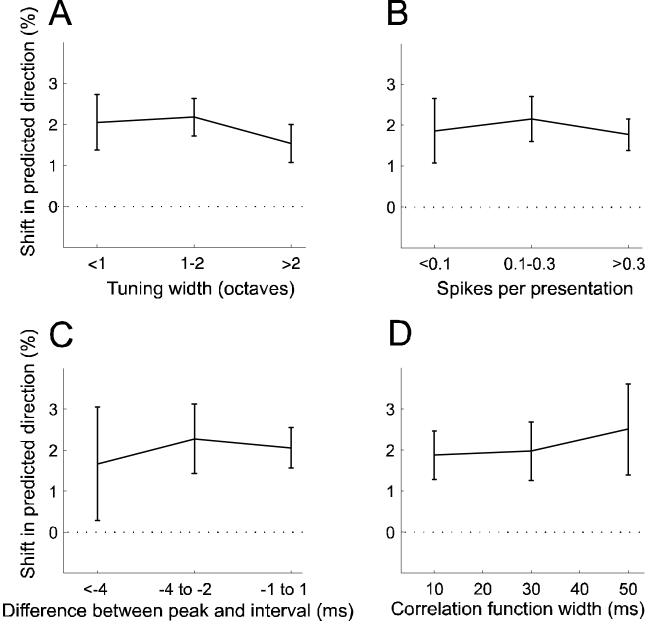Figure 9.
Dependence of stimulus-timing-depenent plasticity on tuning width, and on the firing rate and temporal precision of responses to conditioning stimuli. A, Shift size as a function of tuning curve width (n = 144-245). B, Shift size as a function of number of spikes fired during presentation of conditioning stimuli (n = 156-267). C, D, Spiking precision was measured using two features of the cross-correlation functions described in Fig. 3: the difference between their peak position and the conditioning interval, and their widths. C, Shift size as a function of the difference between peak position and conditioning interval (n = 51-197). D, Shifts size as a function of cross-correlation width (n = 28-139). Only data from conditioning with 8 and 12 ms intervals were considered and the sign of the results from negative conditioning was reversed so that the data could be pooled and plotted as shifts in the predicted direction. Errors bars are ±one standard error of the mean.

